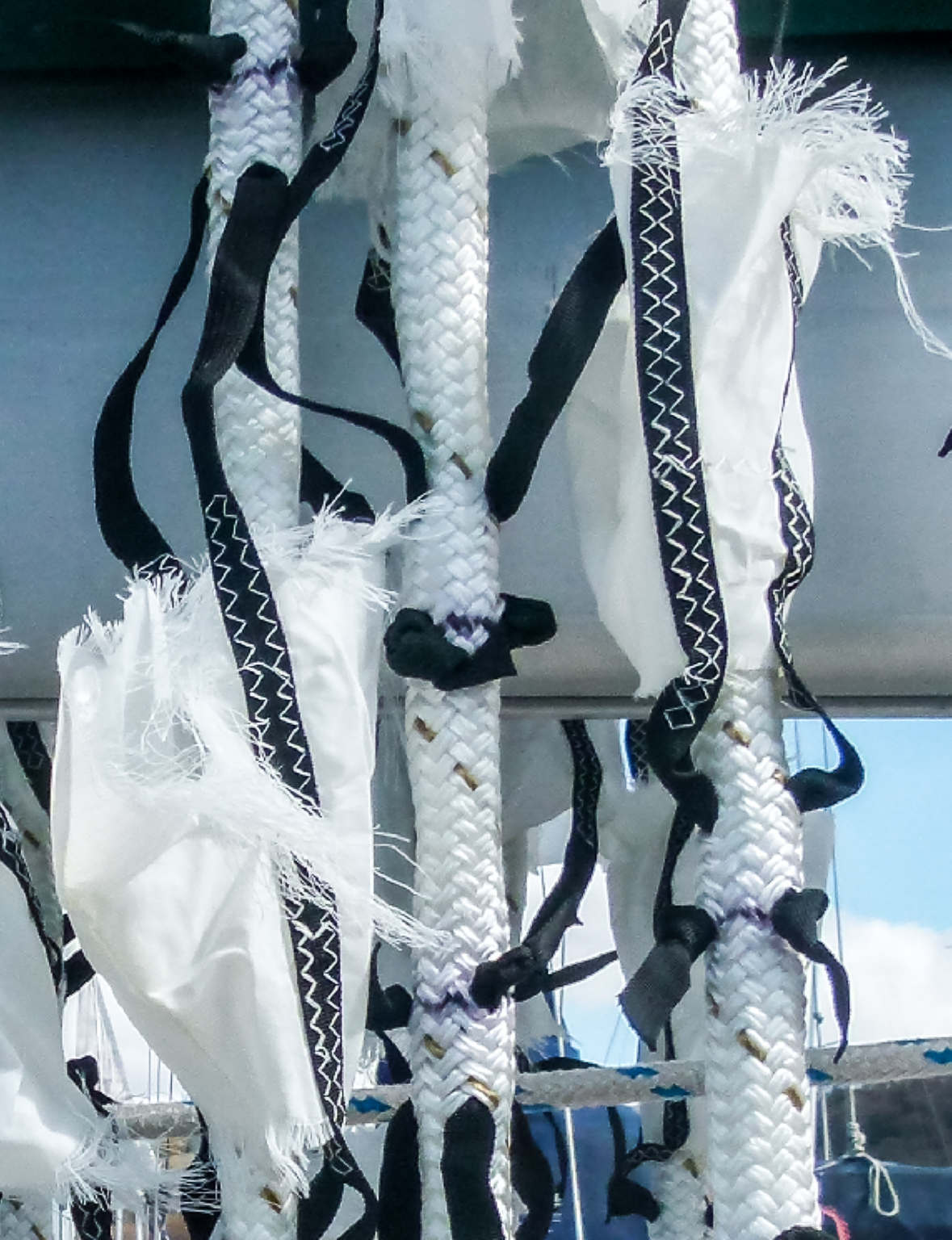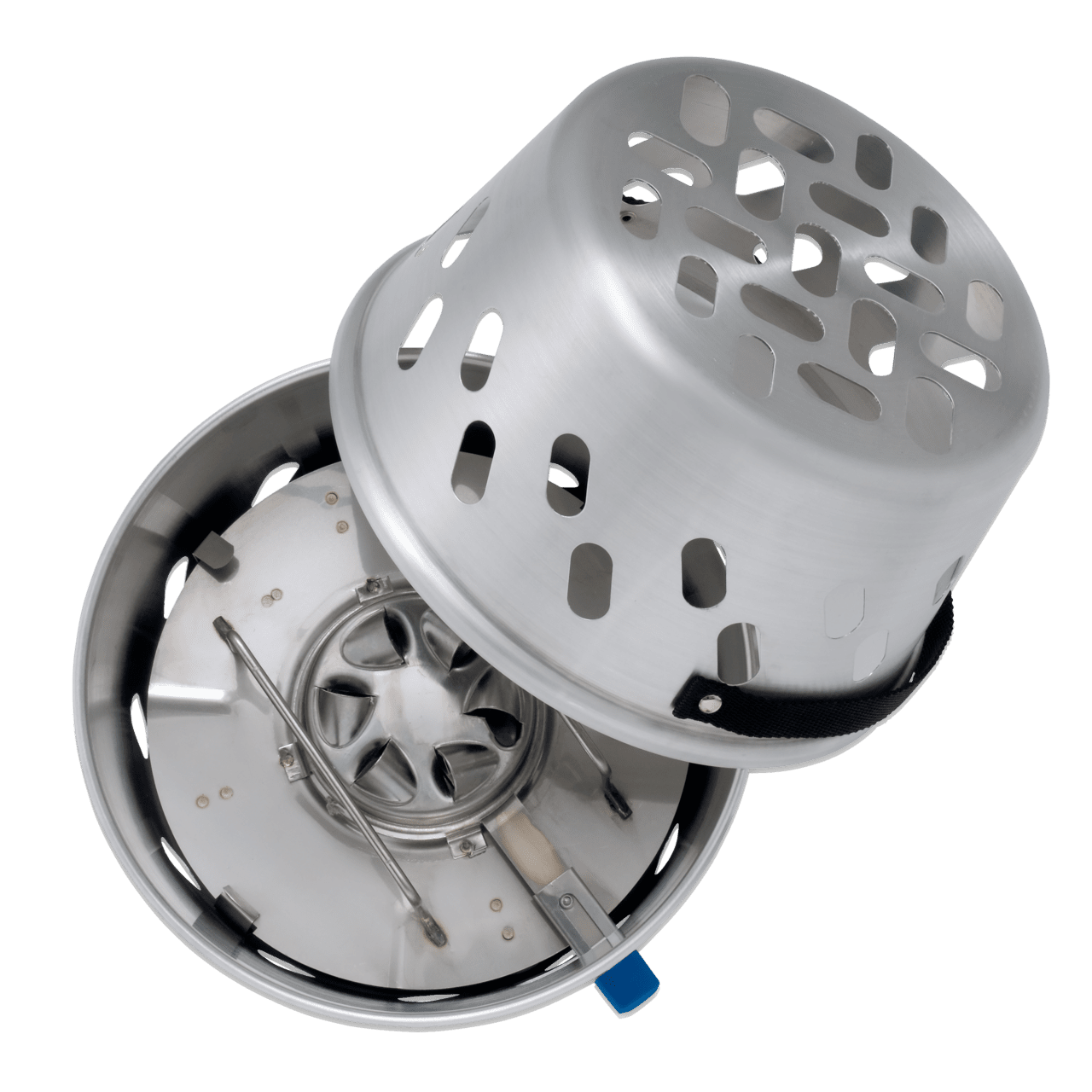
Tips, Tricks & Thoughts:
Tips
-
Wire Tie Best Practice
5 CommentsReading Time: < 1 minuteFreeRead more: Wire Tie Best PracticeOur new-to-us J/109 was filled with wire ties like the one on the left. Horrible things because when changes and additions are made people tend to just add more wire ties over the existing bundle. So, as I clean up the wiring, I’m replacing the ones on the left with those on the right (first […]
-
Q&A—New Lead Acid Batteries From Victron
19 CommentsReading Time: 2 minutesFreeRead more: Q&A—New Lead Acid Batteries From VictronMember Kimbal asked: I’m looking at an ad on Yachtworld for a boat that has “New Victron Super Cycle AGM batteries – 3 x 125ah (2022) – Note: These batteries are a new type of AGM which approach lithium in some respects, and matches the Carbon Foam Firefly batteries performance – capable of up to […]
-
Cruising With Starlink Reports
15 CommentsReading Time: 2 minutesFreeRead more: Cruising With Starlink ReportsWe have received some favourable reports from Members about using Starlink while cruising. First on a tip we already published. And recently two more: Three weeks ago I installed a Starlink antenna on BJoyce. Contrary to some skeptics this thing works GREAT! Hasn’t buffered once and fast. No limit on devices or anything else. The […]
-
Is It Time To Consider a Robot For Watchkeeping?
1 CommentReading Time: < 1 minuteFreeRead more: Is It Time To Consider a Robot For Watchkeeping?OK, that was a clickbait title, if ever there was one. Anyway, I have been vaguely interested in the AI lookout and collision avoidance technology that has been used in the singlehanded racing game for some years, called OSCAR. Now I see that the company has rebranded as SEA.AI and their entry level product is […]
-
Tools: The Little Details Matter
0 CommentsReading Time: < 1 minuteFreeRead more: Tools: The Little Details MatterI just took the Edson steering system on our J/109 apart to service it. A fiddly job that requires undoing a bunch of fasteners in awkward places only accessible through the top of the steering pedestal after removing the compass. This job was way easier and probably took half as long using my new Wera […]
-
Heritage Intrepid 35
1 CommentReading Time: < 1 minuteFreeRead more: Heritage Intrepid 35As most of you know, I’m a sucker for most any boat from the drawing boards of McCurdy and Rhodes. Normally, to get a M&R boat you are looking at custom boats, or those from Hinckley, so deep pockets required. But, while I was researching something else, I discovered that, back in the 70s, the […]
-
Sailing In Close Quarters
2 CommentsReading Time: 2 minutesFreeRead more: Sailing In Close QuartersI have to confess that over the 30 years we owned our McCurdy and Rhodes 56 I let my close-quarters sailing skills get rusty. It’s not that the boat is unhandy, far from it, with main and staysail she can be sailed into the smallest and most crowded of spaces. But somehow, in the the […]
-
The Best Cruising Boat
3 CommentsReading Time: < 1 minuteFreeRead more: The Best Cruising BoatThe photo shows our new-to-us J/109 and AAC member Frank’s Ovni 435 hanging out together in the workshop at East River Shipyard here in Nova Scotia. It would be hard to imagine two more different boats, and yet I like both boats a lot. Which is best? Wrong question. They are designed for different purposes. […]
-
Quote Of The Day
0 CommentsReading Time: < 1 minuteFreeRead more: Quote Of The DayThe reason that ‘guru’ is such a popular word is because ‘charlatan’ is so hard to spell. William Bernstein I strongly recommend keeping this quote top of mind when watching YouTube.
-
Don’t Use Old Sailcloth For a Jordan Series Drogue
9 CommentsReading Time: < 1 minuteFreeRead more: Don’t Use Old Sailcloth For a Jordan Series DrogueThere’s an article on DIYing a Jordan Series Drogue (JSD), AAC preferred and recommended storm survival equipment, over at This Old Boat. There’s some useful stuff to learn in the article; however, the author makes the terrible mistake of using old discarded sailcloth that she bought from a boat salvager for the cones. We know […]
-
Simple Alcohol Heaters Are No More
15 CommentsReading Time: < 1 minuteFreeRead more: Simple Alcohol Heaters Are No MoreI have been thinking about heat for our J/109 lately. Not a full-on system for the Arctic like we had on or McCurdy and Rhodes 56, but rather something to take the chill off on a cold morning in early or late summer. One idea I had was one of those portable alcohol heaters that […]
-
Portable Solar Panels For Cruisers
11 CommentsReading Time: < 1 minuteFreeRead more: Portable Solar Panels For CruisersThe good folks over at Ocean Planet Energy are selling these foldable and portable solar panels. A couple of these will provide a cruising boat with around 100 amp hours at 12 volts over the course of a reasonably sunny day at anchor. To me this is a way better idea, at least to supplement […]
-
On Vacation (Holiday)
0 CommentsReading Time: < 1 minuteFreeRead more: On Vacation (Holiday)Phyllis and I are on the road visiting our families this week and next, so there will be few, or maybe no, Tips, Tricks and Thoughts until late November.
-
Ocean Racing Back In The Day
0 CommentsReading Time: < 1 minuteFreeRead more: Ocean Racing Back In The DayIf you raced offshore back in the seventies and eighties you probably wore Line 7 foul weather gear and a Lirakis harness. The less said about the non-breathing heavy PVC former—it was waterproof but that did not help much since we stewed in our own juices—the better. But the latter was the first widely available […]
-
Don’t Guess Antifreeze
4 CommentsReading Time: < 1 minuteFreeRead more: Don’t Guess AntifreezeI confess I used to just flush out the systems on our boat until the antifreeze came out the end looking “pink enough”. But that approach can either result in a lot of expensive damage if the antifreeze is overly diluted by the water in the system, or end up being wasteful and expensive when […]
-
The End of Skill?
2 CommentsReading Time: 2 minutesFreeRead more: The End of Skill?Two companies have just announced that they are going to build an autonomous motorboat. Yes, the crew will be able to sit aboard and do absolutely nothing…except drink their faces off…while the boat runs itself. Never mind whether or not this is even doable (way past my pay grade to judge). The thing that gets […]
-
Easy To Grab Rope Tail
4 CommentsReading Time: 2 minutesFreeRead more: Easy To Grab Rope TailIf we have a short rope tail, here’s a knot that gives us more to grab than the classic figure-eight stopper knot. The above is the sprit extension line on our J/109. I have no idea what it’s called or where I learned it. Might be Boy Scouts 60 years ago. Anyway, it’s quick and […]
-
Long Live Free-Standing Radars
5 CommentsReading Time: < 1 minuteFreeRead more: Long Live Free-Standing RadarsBased on 30 years of radar use in some of the foggier and icier waters in the world, I have long advocated for free-standing radars, at least for those who venture into these waters, rather than integrating radar into a plotter. So it’s way-cool to see that Furuno have just brought out two brand new […]
-
The Cockpit Is NOT As Safe As It Feels
15 CommentsReading Time: < 1 minuteFreeRead more: The Cockpit Is NOT As Safe As It FeelsIt’s well worth reading the excellent report from US Sailing on the tragic crew overboard (COB) death in the 2022 Bermuda race. Lots of good analysis and some great recommendations. That said, the biggest takeaway for me is that the cockpit of a sailboat at sea can provide an illusory sense of safety. The fact […]
-
Wing Keel Craze
7 CommentsReading Time: < 1 minuteFreeRead more: Wing Keel CrazeI will bet this keel was designed shortly after Australia II won the America’s Cup. It’s a dead ringer for Ben Lexcen’s revolutionary keel. But here’s the thing, while end plates are good and bulbs can make shallower keels more efficient than they would be otherwise, Australia II‘s keel was designed to get around or […]
-
Don’t Overload Catamarans
2 CommentsReading Time: < 1 minuteFreeRead more: Don’t Overload CatamaransPeople often think that I must be a multihull hater, just because I own a monohull. Not true, I love well-designed catamarans (and tris, too) like this way-cool Chris White 42. But here’s the key point: To be safe, and deliver on their speed potential, cats must not be overloaded. Check out how thin the […]
-
Great Risk Quote
1 CommentReading Time: < 1 minuteFreeRead more: Great Risk QuoteYou should obsess over risks that do permanent damage and care little about risks that do temporary harm, but the opposite is more common. Morgan Housel Morgan is one of the best thinkers about financial risk around. Often his thoughts apply to offshore voyaging too. This one applies best to the majority of cruisers who […]
-
Season Extender
9 CommentsReading Time: 2 minutesFreeRead more: Season ExtenderWinter is fast approaching here in Nova Scotia, so we hauled our J/109 a week ago. We would be kind of bummed, except now we get more time to play with our turbocharged (sliding seats) Whitehall. Most years we go on rowing until early December and are back at it in March. No worries about […]
-
Sounding Hammer Trick
0 CommentsReading Time: < 1 minuteFreeRead more: Sounding Hammer TrickI was working with a very experienced and smart composite technician today to check out a crack in the gel coat in the bilge of our J/109. I was pretty sure it was not structural and just the result of sloppy gel coat application but wanted a pro to check. He sounded it with a […]






















